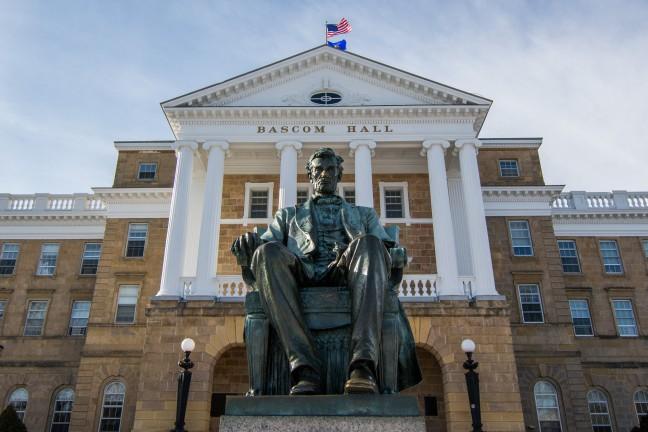At the end of November, the University of Wisconsin will launch its pilot of a shortened version of its post-graduate plans questionnaire to better gauge where students land immediately after completing their undergraduate degrees.
In 2008, the Office of UW Academic Planning and Institutional Research started giving graduating students a survey to collect their post-graduation plans to comply with national standards set forth by Voluntary System of Accountability/College Portrait, Sarah Lazenby, vice provost and director of APIR, said.
The university is moving away from that survey in hopes of curbing the number of surveys schools and colleges within UW individually send out to collect information on their grads. The goal is to create a more cohesive data set on UW’s grads, Lazenby said.
“Not everybody was asking the same types of questions, some schools and colleges didn’t really have a survey,” Lazenby said. “So we all sat down and said how can we do this better?”
In the long run, Lazenby said the new survey will streamline the collection of information across schools and colleges within UW by eliminating the need for any school or college across campus to send out surveys of their own.
For students, Lazenby said, the new survey will reduce the number of survey requests they receive upon graduation.
Past versions of the survey have included questions to measure educational learning outcomes, but with the effort to simplify the survey, Lazenby said that component has been eliminated.
“We really wanted to make it pretty streamlined,” Lazenby said. “We came to an agreement that let’s get this as short as we can, really get it narrow and focused to immediately after graduation.”
Because the new survey is being modeled after an exit survey developed by the National Association of Colleges and Employers, an organization of career service professionals, the portion of the questionnaire dealing with international engagement has been cut as well.
Lazenby said the school still values information about international learning outcomes and is looking into other ways to collect it.
But the newest version will afford students the opportunity to return to the survey to update their graduation plans all the way until six months after graduation.
“Say in December someone is still looking for employment or they’re not sure what they’re going to do, they can go back in and update that information up to six months out after graduation,” Lazenby said.
For the College of Letters and Sciences, Rebekah Paré, executive director of the L&S Career Initiative, said she hopes this new survey will help measure the first destinations, which are typically either employment or further education, of its graduates.
L&S academic, career services looking to move above University Bookstore
Several schools, Lazenby said, like the College of Engineering and the School of Business, have made more concerted efforts for many years to track where their graduates take jobs, predominantly because each’s accreditation is dependent on reporting that information.
It wasn’t until the College of Letters and Sciences launched a career initiative in 2014 that it started tracking student employment after graduation, Paré said. As part of that career initiative, the College of Letters of Sciences issued two surveys in the fall of 2015. The first measured where Letters and Sciences graduates landed professionally one year out of school and the second reported where graduates were eight and ten years out of school.
Paré said about 87 percent of Letters and Sciences graduates secure jobs, enter grad school or both within one year of graduation, with low rates of underemployment.
Without conducting another comprehensive survey like the one that was done in 2015, Paré said Letters and Sciences doesn’t currently have the infrastructure to report where graduates land beyond their initial jobs.
“We have the data, but have not been able to produce that in a comprehensive way [for students],” she said.
She’s hopeful student advising might hire staff to potentially allocate time to an initiative to make that information accessible for students.
For now, she said Letters and Sciences is also waiting to see what data comes out of the streamlined campus-wide survey.
“We’re watching now what’s happening on campus with the change of the post-graduation questionnaire because that data we think will end up being a lot more useful with the changes that they’re making,” Paré said.
By standardizing the questions across schools and colleges as well as expanding the survey window to six months after graduation, Lazenby said it will be easier to compare and contrast reports between colleges and get a better snapshot of post-graduation plans across the entire campus.
For this first year, Lazenby said some students will still receive surveys from their respective schools or colleges so the university doesn’t lose any data through the survey’s pilot phase. But come fall of 2017, any college-specific questions will be integrated into the generic questionnaire.
“A couple of schools and colleges have added in questions specific to their grads,” Lazenby said. “But by and large, it’s the NACE questionnaire.”
The streamlined survey will be sent out to students graduating this December on November 28.














